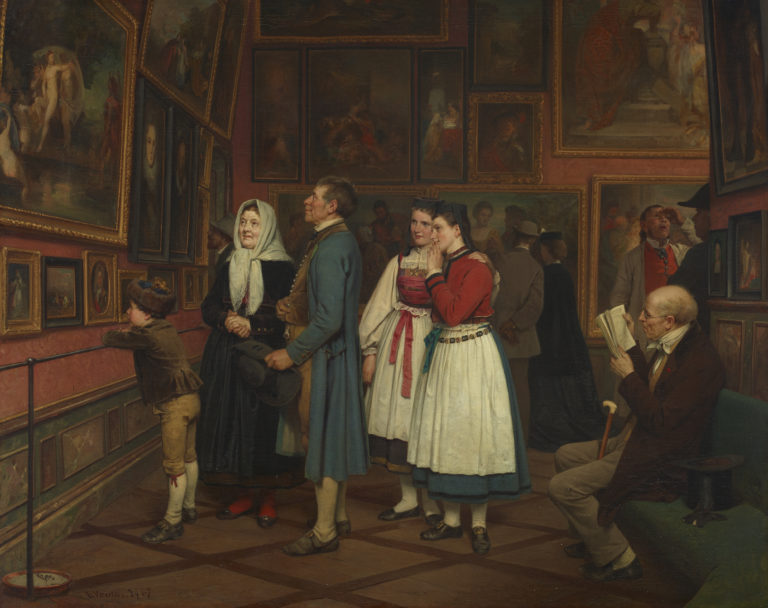Bibliography
Rainer Michael Mason, Franz Gertsch. Visages paysages, exh. brochure. Vevey, Musée Jenisch Vevey – Cabinet cantonal des estampes, 2017.
Andrea Firmenich and Johannes Janssen (eds.), Franz Gertsch. Holzschnitte. Aus der Natur gerissen, exh. cat. Bad Homburg, Museum Sinclair-Haus, Köln, Wienand, 2013.
Rainer Michael Mason (ed.), Franz Gertsch. Large-scale Woodcuts/Xilografías monumentales, exh. cat. Geneva, Cabinet des estampes du Musée d’art et d’histoire, 1990: 66-67, cat. 10.




Franz Gertsch’s earliest paintings can be read in the light of pop art, with compositions based on photographs, figures reduced to silhouettes, a lack of detail, simplified shapes and stretches of colour. In the early 1970s, however, he began to mimic the precision of photography by producing such detailed paintings that from a distance they appeared more lifelike than life itself. These large-format works, based on photographs often taken by Gertsch himself, recount an era through portraits of artists and genre scenes.
When Gertsch was looking for new approaches to art in 1986, he experimented with his first woodblock prints using a technique he had recently perfected. He pressed a gouge knife onto a block of wood to obtain a copy of the source image that was as detailed as possible thanks to thousands of tiny points of varying depth. The original image was screened onto the printing surface, coated in a thin layer of blue dye, letting the artist follow the progression of his work by visualising every mark left in the holes made by the points. The surface left standing out in relief was inked and printed, while the hollows left the paper white.
Gertsch makes his own ink from pure pigments purchased in Kyoto and orders his paper from one of Japan’s finest paper makers, Heizaburo Iwano. Each sheet is carefully hand-printed, a process inspected through large magnifying glasses, requiring input from several people including the artist himself. The eighteen prints in the Doris edition are printed in different colours in three chromatic groups. This work is one of the grey group, with an added touch of sepia pigment inspired from the colour of ash. Each variant has its own aura, but all provide an extraordinary tactile sensation, opening up a new perception of the image.